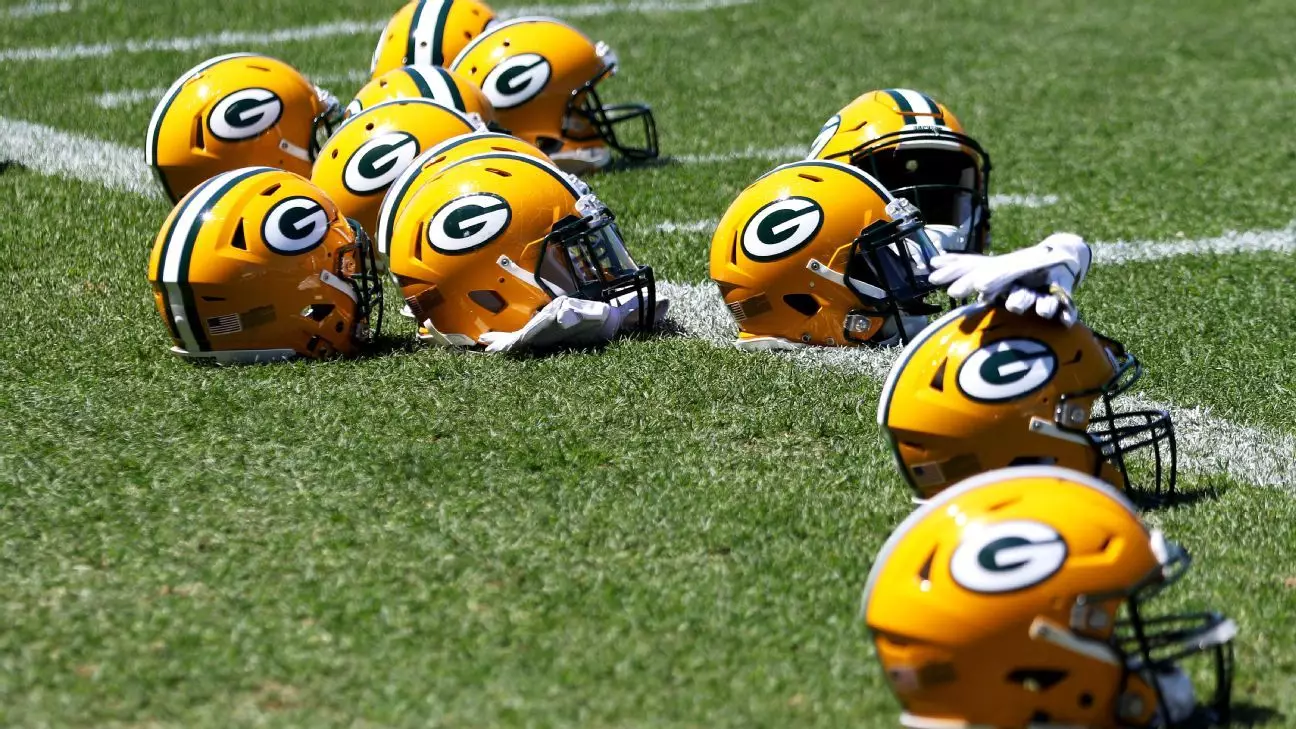Over the past two decades, the NFL’s financial landscape has spectacularly transformed from a modest $138 million in league-wide revenue sharing to a staggering $13 billion distributed among its 32 teams. While on the surface this explosion of wealth appears as a testament to a thriving sports industry, it also masks a deeper, more concerning reality: the sport’s insidious entrenchment as a near-monopoly’s economic juggernaut. As the Green Bay Packers unveil their latest financial report—showing a national revenue sharing of $432.6 million per team—what’s truly revealed is the deficit of genuine competition, fairness, and sustainability.
Beneath the electrifying broadcasts and sold-out stadiums lies an unsettling truth: the massive influx of money primarily serves the league’s interests, propelling concentrated wealth into the hands of franchise owners, broadcasters, and league officials. The exponential growth in revenue sharing—even amid the turbulent times witnessed over the years—demonstrates a power structure that effectively perpetuates itself, reinforcing the NFL’s dominance and stability. This is not a genuine economy of growth but rather a carefully cultivated money-printing machine that benefits a few at the expense of fairer, more equitable sporting ecosystems.
The Myth of Democratic Prosperity in a Privately Controlled League
The NFL’s financial transparency is only made possible by the unique public ownership of the Green Bay Packers. Unlike other teams, the Packers’ financial disclosures serve as a rare window into how league-wide revenues are distributed and utilized. However, this transparency also exposes the fragility of a model that ostensibly champions shared prosperity but intrinsically limits broader ownership participation. With a seemingly democratic ownership structure—more than 539,000 shareholders holding over 5 million shares—there is an illusion of community involvement. Yet, the system is deliberately designed to prevent any individual from wielding disproportionate control, capping ownership at 200,000 shares.
Despite this veneer of inclusivity, the NFL’s financial machinery is skewed toward maintaining a tight grip on revenue streams. The league’s strategic focus on broadcasting rights—largely derived from TV and streaming—confers enormous financial power to media giants and broadcasters, often at the expense of the sport’s authentic community roots. Instead of channeling these vast revenues into grassroots development or player welfare, the league funnels them into sustaining a highly profitable entertainment spectacle that increasingly resembles a corporate cartel rather than a genuinely democratic sporting enterprise.
The Risks of Overdependence on Streaming and Broadcasters
While the NFL touts its success in expanding into streaming and digital platforms, this growth is less a sign of innovative vitality and more a calculated gamble to secure long-term dominance in digital entertainment. The league’s overreliance on broadcast and streaming deals—as Murphy pointed out—can be viewed as a strategic move to lock in lucrative contracts that some might argue inflates revenues artificially. Such dependence leaves the league vulnerable to shifting consumer behaviors and technological disruptions. A league that is so heavily invested in traditional media agreements risks losing its grip if consumer preferences pivot away from legacy broadcasters.
The troubling aspect here is how such financial structures discourage smaller-market teams and limit upward mobility. Major franchises with entrenched media partnerships continue to reap outsized benefits, further consolidating the league’s power. Meanwhile, smaller or less financially fortunate teams find it increasingly difficult to sustain competitiveness, risking a future in which NFL teams are less about the sport and more about corporate assets.
The Mirage of Financial Security and Long-Term Sustainability
The material growth in corporate reserves—such as the Packers’ $579 million fund—does little to mask the fundamental inequities permeating the league. While such reserve funds provide a veneer of stability, they also reveal a league that prioritizes safeguarding its existing structure rather than fostering true economic resilience. In fact, the absence of private equity investments in a publicly owned team like the Packers underlines a peculiar paradox: the league’s reliance on widespread fractional ownership to maintain a facade of community ownership, while ensuring that power remains concentrative.
The league’s concerted investments—nearly $675 million into Lambeau Field and related facilities—serve to underpin the league’s status quo. These expenditures are less about fostering communal sportsmanship and more about cementing the NFL’s monopoly on American football as a cultural and economic institution. As the NFL continues to grow, the question persists: At what cost does this prosperity come? Is the league building a sustainable future, or is it merely reinforcing a fragile structure that could crumble under financial or social pressures?
While the league touts unwavering success, a closer examination reveals that this wealth accumulation is far from equitable or democratic. Instead, it is a display of how power, money, and influence are meticulously concentrated within a structure that has little room for challenge or reform. As the league’s financial figures soar ever higher, so too do questions about its responsibility to the sport, its players, and its broader societal impact.



Leave a Reply